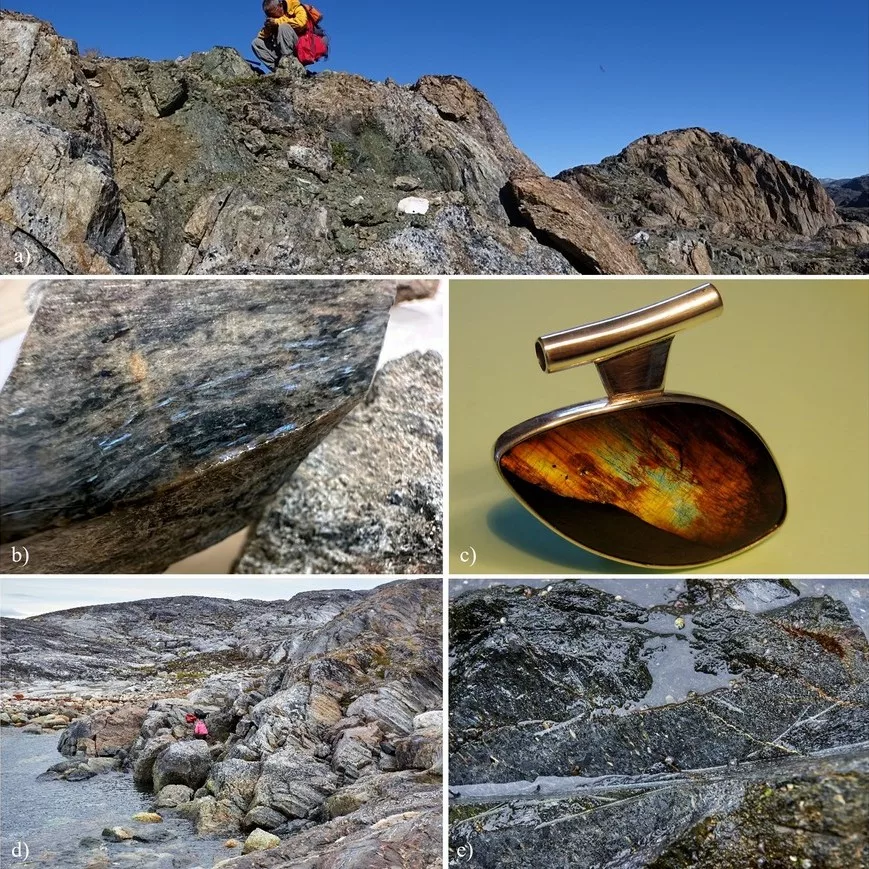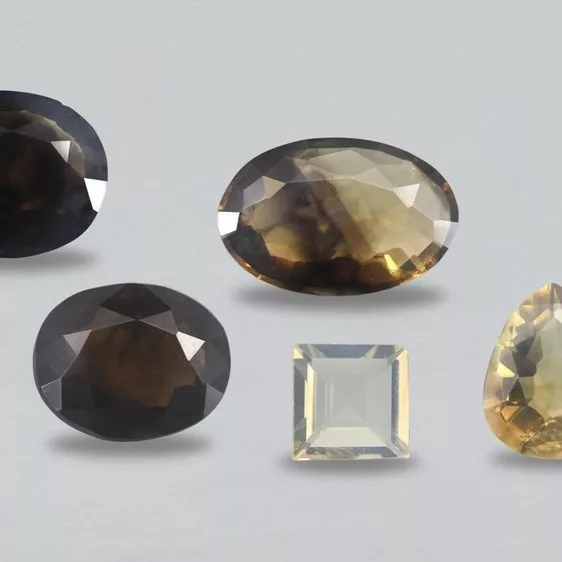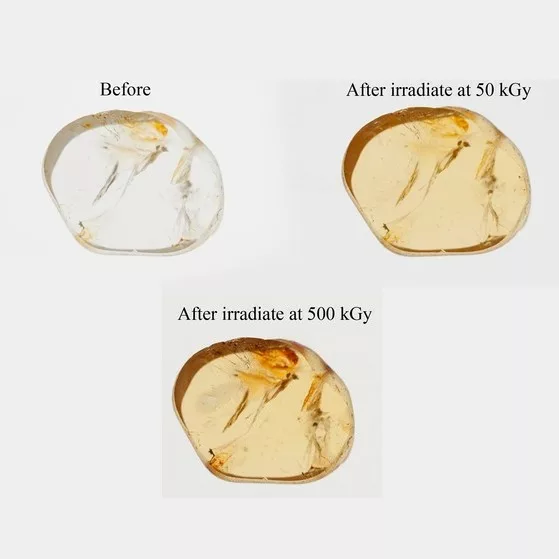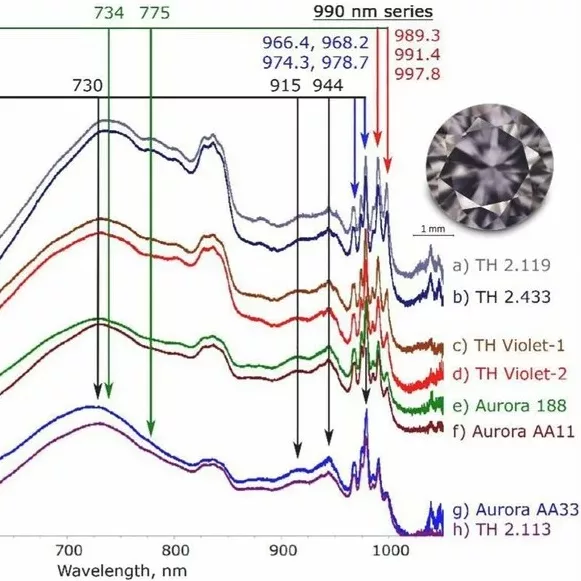A nuummite occurrence from kangerluarsuk in the Maniitsoq Region, West Greenland
Keywords: Nuummite, Iridescent amphibole, gemstone formation, Greenland
K. I. Giesecke was the first to recognize the beauty of the iridescent amphibolitic gemstone Nuummite in 1810 when he collected samples from the island Simiuttat in the Nuuk area, West Greenland (Figure 1), for further investigation (Johnstrup, 1878). The trade name ‘Nuummite’ was introduced in the early 1980s after the rediscovery of the gemstone at eight localities in the Nuuk area (Appel & Jensen, 1987). Nuummite consists mainly of the amphibole minerals anthophyllite (Mg,Fe2+)7 [Si8 O22](OH)2 and gedrite (Mg,Fe2+)5 Al2 [Al2 Si6 O22](OH)2 with accessory minerals such as cordierite, chalocopyrite and pyrite (Appel & Jensen, 1987). While Simiuttat has been subject to detailed investigations by Rodgers et al. (1996), Champness & Rodgers (2000) and Franz et al. (2018) among others, only limited descriptions of nuummite occurrences occur from other parts of Greenland. We describe a new nuummite occurrence at Kangerluarsuk, East of Maniitsoq (Figure 2), far from the original find. It is compared to the Simiuttat occurrence to better understand the formation of nuummite deposits and the potential of finding new deposits.
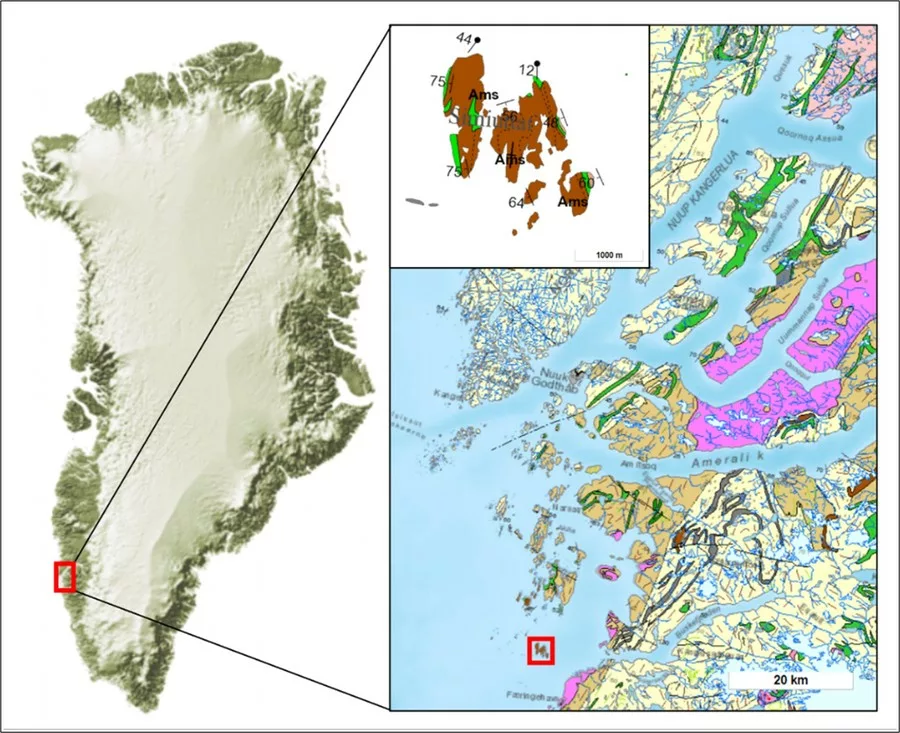
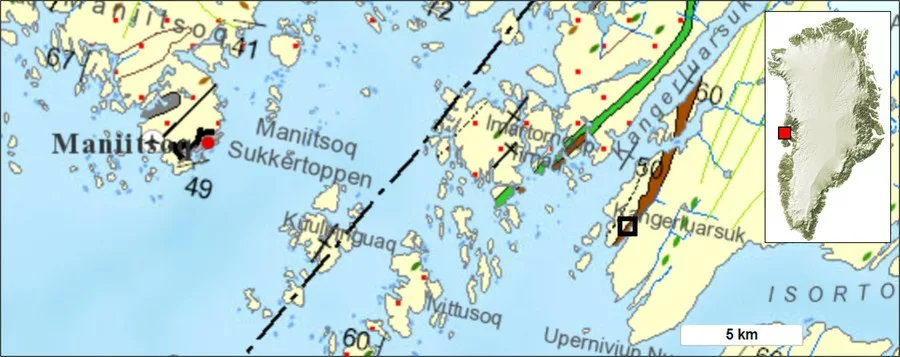
The nuummite at Kangerluarsuk occurs in a 2 meter wide and 15 meter long lens within a garnet-gneiss ridge with thin garnet-, gedrite- and mica-rich layers (Figure 3). The ridge is open along strike and flanked by gneisses to the West and garnet-gedrite-mica-kyanite-schist and amphibolites to the East. The nuummite consist of anthophyllite, gedrite and minor biotite and pyrite, and the grain size is 0.1-1 cm. It has a brownish gray body colour and is highly weathered. Iridescence is blue and displayed as <1 mm thin elongate iridescent grains. At Simiuttat, the nuummite has grain sizes of 0.1-5 cm resulting in larger iridescent grains compared to Kangerluarsuk. The mineral assemblage of the Simiuttat nuummite is anthophyllite, gedrite, biotite, cordierite, chalocopyrite and pyrite. The nuummite has a dark grey body colour with a weathered rusty surface and golden or blue iridescence (Figure 3). The nuummite was difficult to recognize in the field at the inland locality of Kangerluarsuk. By contrast, iridescent grains of the Simiuttat nuummite were easily recognized in the field at the seashore where the nuummite is polished by nature itself through wave actions (Figure 3). The Simiuttat nuummite has been dated to 2732±10 Ma (zircon) – 2707±12 Ma (monazite) (Rodgers et al., 1996). Calculations made by Franz et al. (2018) suggests formation at low-to-moderate pressures with minimum temperatures of 590-600°C corresponding to upper greenschist to amphibolite facies.
Most of the Greenlandic Archean rocks have been subject to intense ductile deformation resulting in the discontinuation of amphibolitic units, transformed into thin layers, lenses or boudinage structures. This is the case at Simiuttat where the nuummite occur as small centimeter-thick veins and in lenses up to one meter in width within a 3-meterthick section between a garnet-gneiss and orthogneiss. Similarly, the Kangerluarsuk occurrence is a discontinuous lens. While the nuummite occurrences in the Nuuk area can be traced for several hundred meters, it will need to be investigated whether the Kangerluarsuk nuummite similarly can be traced along strike. Appel & Jensen (1987) suggested that nuummite occurrences in the Nuuk area are related to the Malene Supracrustal Belt, that primarily encompasses amphibolitic rocks and metasediments enclosed by gneiss. However, investigations carried out in the past 30 years by the Government of Greenland and the National Geological Survey of Denmark and Greenland have yet to yield new nuummite occurrences. The authors suggest that this might be due to a focus on ore deposits rather than gemstones in combination with the difficulties of recognizing nuummite in the field. That nuummite occurrences occur as mafic enclaves or bands at the boundary of metasedimentary units and amphibolites in shear zones is a hypothesis that need to be investigated further. This may help locating new nuummite occurrences – a gemstone that is not easily recognized in the field.
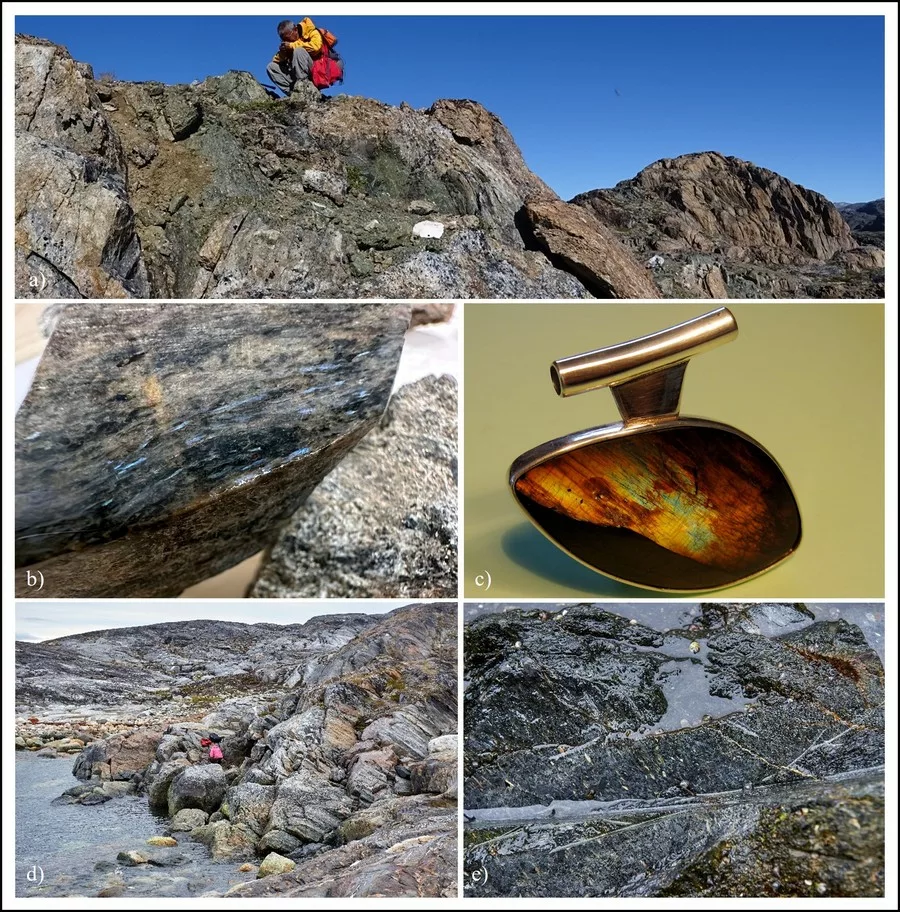
References:
- Appel, P. W. E. & Jensen, A., 1987. A new gem material from Greenland: iridescent orthoamphibole. Gems & Gemology, 23(1), pp. 36-42.
- Champness, P. E. & Rodgers, K. A., 2000. The origin of iridescence in anthophyllite-gedrite from Simiuttat, Nuuk district, southern West Greenland. Mineralogical Magazine, 64(5), pp. 885-889.
- Franz, L., Sun, T. T., Wirth, R., de Capitani, C. & Ying, L. H., 2018. Violet-to-Blue ‘Nuummite’ from Simiuttat, Greenland: Origin of Colour Appearance and Condisions of Formation. The Journal of Gemmology, 35(4), pp. 330-338. Figure 3. a) Kangerluarsuk ridge; b) Kangerluarsuk nuummite; c) Nuummite pendant from Nuuk, courtesy of P. Møller; d) Simiuttat; e) Simiuttat nuummite. (Photos: MMR/VHDesign).
- Johnstrup, F., 1878. Gieseckes mineralogiske rejse i Grønland. Bianco Lunos Bogtrykkeri, p. 149.
- Rodgers, K. A., Kinny, P. D., McGregor, V. R., Clark, G. R. & Henderson, G. S., 1996. Iridescent anthophyllite-gedrite from Simiuttat, Nuuk district, southern West Greenland: composition, exsolution, age. Mineralogical Magazine, 60, pp. 937-947.
Acknowledgements
The authors thank Clark R. L. Friend for pointing out the approximate location of the Kangerluarsuk nuummite occurrence.

